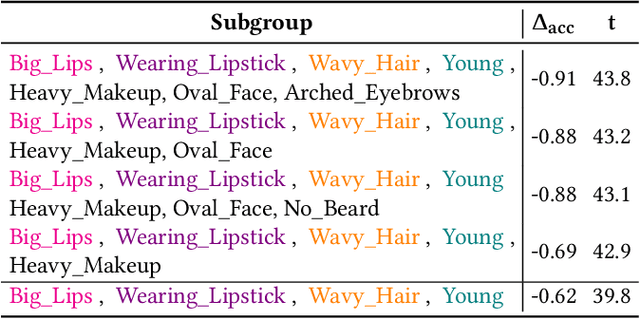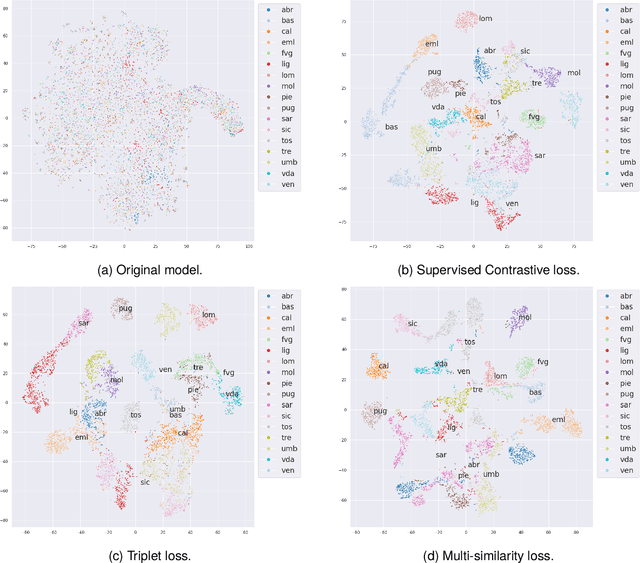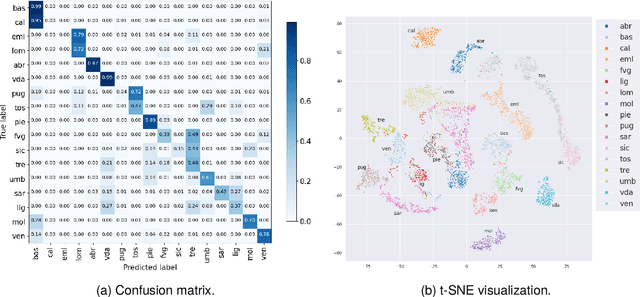Elena Baralis
voc2vec: A Foundation Model for Non-Verbal Vocalization
Feb 22, 2025Abstract:Speech foundation models have demonstrated exceptional capabilities in speech-related tasks. Nevertheless, these models often struggle with non-verbal audio data, such as vocalizations, baby crying, etc., which are critical for various real-world applications. Audio foundation models well handle non-speech data but also fail to capture the nuanced features of non-verbal human sounds. In this work, we aim to overcome the above shortcoming and propose a novel foundation model, termed voc2vec, specifically designed for non-verbal human data leveraging exclusively open-source non-verbal audio datasets. We employ a collection of 10 datasets covering around 125 hours of non-verbal audio. Experimental results prove that voc2vec is effective in non-verbal vocalization classification, and it outperforms conventional speech and audio foundation models. Moreover, voc2vec consistently outperforms strong baselines, namely OpenSmile and emotion2vec, on six different benchmark datasets. To the best of the authors' knowledge, voc2vec is the first universal representation model for vocalization tasks.
A Synthetic Benchmark to Explore Limitations of Localized Drift Detections
Aug 26, 2024Abstract:Concept drift is a common phenomenon in data streams where the statistical properties of the target variable change over time. Traditionally, drift is assumed to occur globally, affecting the entire dataset uniformly. However, this assumption does not always hold true in real-world scenarios where only specific subpopulations within the data may experience drift. This paper explores the concept of localized drift and evaluates the performance of several drift detection techniques in identifying such localized changes. We introduce a synthetic dataset based on the Agrawal generator, where drift is induced in a randomly chosen subgroup. Our experiments demonstrate that commonly adopted drift detection methods may fail to detect drift when it is confined to a small subpopulation. We propose and test various drift detection approaches to quantify their effectiveness in this localized drift scenario. We make the source code for the generation of the synthetic benchmark available at https://github.com/fgiobergia/subgroup-agrawal-drift.
Detecting Interpretable Subgroup Drifts
Aug 26, 2024



Abstract:The ability to detect and adapt to changes in data distributions is crucial to maintain the accuracy and reliability of machine learning models. Detection is generally approached by observing the drift of model performance from a global point of view. However, drifts occurring in (fine-grained) data subgroups may go unnoticed when monitoring global drift. We take a different perspective, and introduce methods for observing drift at the finer granularity of subgroups. Relevant data subgroups are identified during training and monitored efficiently throughout the model's life. Performance drifts in any subgroup are detected, quantified and characterized so as to provide an interpretable summary of the model behavior over time. Experimental results confirm that our subgroup-level drift analysis identifies drifts that do not show at the (coarser) global dataset level. The proposed approach provides a valuable tool for monitoring model performance in dynamic real-world applications, offering insights into the evolving nature of data and ultimately contributing to more robust and adaptive models.
KAN You See It? KANs and Sentinel for Effective and Explainable Crop Field Segmentation
Aug 13, 2024Abstract:Segmentation of crop fields is essential for enhancing agricultural productivity, monitoring crop health, and promoting sustainable practices. Deep learning models adopted for this task must ensure accurate and reliable predictions to avoid economic losses and environmental impact. The newly proposed Kolmogorov-Arnold networks (KANs) offer promising advancements in the performance of neural networks. This paper analyzes the integration of KAN layers into the U-Net architecture (U-KAN) to segment crop fields using Sentinel-2 and Sentinel-1 satellite images and provides an analysis of the performance and explainability of these networks. Our findings indicate a 2\% improvement in IoU compared to the traditional full-convolutional U-Net model in fewer GFLOPs. Furthermore, gradient-based explanation techniques show that U-KAN predictions are highly plausible and that the network has a very high ability to focus on the boundaries of cultivated areas rather than on the areas themselves. The per-channel relevance analysis also reveals that some channels are irrelevant to this task.
Speech Analysis of Language Varieties in Italy
Jun 22, 2024



Abstract:Italy exhibits rich linguistic diversity across its territory due to the distinct regional languages spoken in different areas. Recent advances in self-supervised learning provide new opportunities to analyze Italy's linguistic varieties using speech data alone. This includes the potential to leverage representations learned from large amounts of data to better examine nuances between closely related linguistic varieties. In this study, we focus on automatically identifying the geographic region of origin of speech samples drawn from Italy's diverse language varieties. We leverage self-supervised learning models to tackle this task and analyze differences and similarities between Italy's regional languages. In doing so, we also seek to uncover new insights into the relationships among these diverse yet closely related varieties, which may help linguists understand their interconnected evolution and regional development over time and space. To improve the discriminative ability of learned representations, we evaluate several supervised contrastive learning objectives, both as pre-training steps and additional fine-tuning objectives. Experimental evidence shows that pre-trained self-supervised models can effectively identify regions from speech recording. Additionally, incorporating contrastive objectives during fine-tuning improves classification accuracy and yields embeddings that distinctly separate regional varieties, demonstrating the value of combining self-supervised pre-training and contrastive learning for this task.
A Benchmarking Study of Kolmogorov-Arnold Networks on Tabular Data
Jun 20, 2024Abstract:Kolmogorov-Arnold Networks (KANs) have very recently been introduced into the world of machine learning, quickly capturing the attention of the entire community. However, KANs have mostly been tested for approximating complex functions or processing synthetic data, while a test on real-world tabular datasets is currently lacking. In this paper, we present a benchmarking study comparing KANs and Multi-Layer Perceptrons (MLPs) on tabular datasets. The study evaluates task performance and training times. From the results obtained on the various datasets, KANs demonstrate superior or comparable accuracy and F1 scores, excelling particularly in datasets with numerous instances, suggesting robust handling of complex data. We also highlight that this performance improvement of KANs comes with a higher computational cost when compared to MLPs of comparable sizes.
A Contrastive Learning Approach to Mitigate Bias in Speech Models
Jun 20, 2024Abstract:Speech models may be affected by performance imbalance in different population subgroups, raising concerns about fair treatment across these groups. Prior attempts to mitigate unfairness either focus on user-defined subgroups, potentially overlooking other affected subgroups, or do not explicitly improve the internal representation at the subgroup level. This paper proposes the first adoption of contrastive learning to mitigate speech model bias in underperforming subgroups. We employ a three-level learning technique that guides the model in focusing on different scopes for the contrastive loss, i.e., task, subgroup, and the errors within subgroups. The experiments on two spoken language understanding datasets and two languages demonstrate that our approach improves internal subgroup representations, thus reducing model bias and enhancing performance.
Voice Disorder Analysis: a Transformer-based Approach
Jun 20, 2024



Abstract:Voice disorders are pathologies significantly affecting patient quality of life. However, non-invasive automated diagnosis of these pathologies is still under-explored, due to both a shortage of pathological voice data, and diversity of the recording types used for the diagnosis. This paper proposes a novel solution that adopts transformers directly working on raw voice signals and addresses data shortage through synthetic data generation and data augmentation. Further, we consider many recording types at the same time, such as sentence reading and sustained vowel emission, by employing a Mixture of Expert ensemble to align the predictions on different data types. The experimental results, obtained on both public and private datasets, show the effectiveness of our solution in the disorder detection and classification tasks and largely improve over existing approaches.
Benchmarking Representations for Speech, Music, and Acoustic Events
May 02, 2024

Abstract:Limited diversity in standardized benchmarks for evaluating audio representation learning (ARL) methods may hinder systematic comparison of current methods' capabilities. We present ARCH, a comprehensive benchmark for evaluating ARL methods on diverse audio classification domains, covering acoustic events, music, and speech. ARCH comprises 12 datasets, that allow us to thoroughly assess pre-trained SSL models of different sizes. ARCH streamlines benchmarking of ARL techniques through its unified access to a wide range of domains and its ability to readily incorporate new datasets and models. To address the current lack of open-source, pre-trained models for non-speech audio, we also release new pre-trained models that demonstrate strong performance on non-speech datasets. We argue that the presented wide-ranging evaluation provides valuable insights into state-of-the-art ARL methods, and is useful to pinpoint promising research directions.
Concept-based Explainable Artificial Intelligence: A Survey
Dec 20, 2023Abstract:The field of explainable artificial intelligence emerged in response to the growing need for more transparent and reliable models. However, using raw features to provide explanations has been disputed in several works lately, advocating for more user-understandable explanations. To address this issue, a wide range of papers proposing Concept-based eXplainable Artificial Intelligence (C-XAI) methods have arisen in recent years. Nevertheless, a unified categorization and precise field definition are still missing. This paper fills the gap by offering a thorough review of C-XAI approaches. We define and identify different concepts and explanation types. We provide a taxonomy identifying nine categories and propose guidelines for selecting a suitable category based on the development context. Additionally, we report common evaluation strategies including metrics, human evaluations and dataset employed, aiming to assist the development of future methods. We believe this survey will serve researchers, practitioners, and domain experts in comprehending and advancing this innovative field.
 Add to Chrome
Add to Chrome Add to Firefox
Add to Firefox Add to Edge
Add to Edge